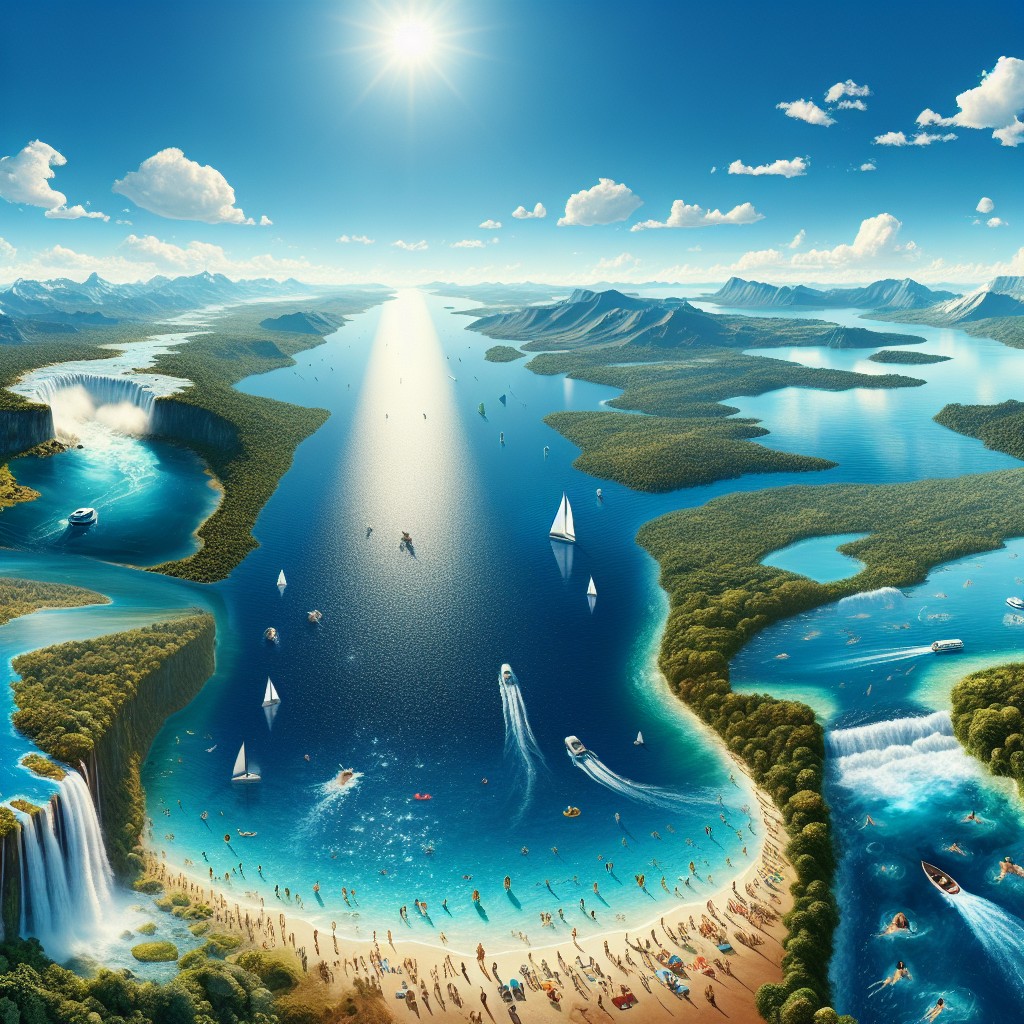The Cayman Islands, a British Overseas Territory located in the western Caribbean Sea, is renowned for its stunning natural beauty, vibrant marine life, and rich cultural heritage. Comprising three islands—Grand Cayman, Cayman Brac, and Little Cayman—this tropical paradise is a haven for nature enthusiasts and adventure seekers alike. The islands are situated approximately 150 miles south of Cuba and 180 miles west of Jamaica, making them an accessible destination for tourists from North America and beyond.
The allure of the Cayman Islands lies not only in its pristine beaches and crystal-clear waters but also in its unique ecosystems that support a diverse array of flora and fauna. The islands boast a warm tropical climate, characterised by gentle breezes and abundant sunshine, which creates an ideal environment for a variety of plant and animal species. The geography of the Cayman Islands is predominantly flat, with limestone formations and coral reefs that contribute to the rich biodiversity found in the region.
The surrounding waters are teeming with marine life, while the islands themselves are home to lush vegetation, including mangroves, tropical hardwood forests, and coastal shrublands. This unique combination of terrestrial and marine ecosystems makes the Cayman Islands a focal point for ecological study and conservation efforts.
Summary
- The Cayman Islands are a British Overseas Territory located in the Caribbean, known for their stunning natural beauty and diverse wildlife.
- The unique flora of the Cayman Islands includes rare orchids, colourful bromeliads, and the iconic silver thatch palm, which is the national tree of the islands.
- The diverse fauna of the Cayman Islands includes the critically endangered blue iguana, the Cayman parrot, and a variety of bird species such as the West Indian whistling duck.
- Conservation efforts in the Cayman Islands are focused on protecting the natural habitats of endemic species, controlling invasive species, and promoting sustainable tourism practices.
- The best places for flora and fauna exploration in the Cayman Islands include the Queen Elizabeth II Botanic Park, the Mastic Trail, and the Booby Pond Nature Reserve.
- The Cayman Islands are home to several endemic species, including the Grand Cayman blue iguana, the Cayman parrot, and the Cayman racer snake.
- Ecotourism opportunities in the Cayman Islands include birdwatching, nature walks, and snorkelling or diving to explore the vibrant marine life and coral reefs.
- Tips for responsible wildlife viewing in the Cayman Islands include respecting natural habitats, not feeding or disturbing wildlife, and following local guidelines for wildlife encounters.
Unique Flora of the Cayman Islands
Coastal Protection and Marine Habitats
Among the most notable plants are the mangroves, which play a crucial role in coastal protection and provide habitat for various marine organisms. The red mangrove (Rhizophora mangle) is particularly significant, as its extensive root systems stabilise shorelines and create nurseries for juvenile fish.
Endemic Plant Species
In addition to mangroves, the islands are home to several endemic plant species that are not found anywhere else in the world. One such example is the Cayman Islands’ national flower, the Blue Mahoe (Hibiscus elatus), which is celebrated for its striking blue-green bark and beautiful yellow flowers. This tree thrives in the moist conditions of the islands’ forests and is often used in local crafts and furniture making. Another endemic species is the Cayman Wild Banana (Musa acuminata), which grows in the wild and produces small, sweet bananas that are cherished by locals.
Ecological Significance and Conservation
The presence of these unique plants highlights the ecological significance of the Cayman Islands and underscores the importance of preserving their natural habitats.
Diverse Fauna of the Cayman Islands
The fauna of the Cayman Islands is equally impressive, with a variety of species that inhabit both terrestrial and marine environments. The islands are home to numerous bird species, including the endemic Grand Cayman Parrot (Amazona leucocephala), which is a symbol of the islands’ natural heritage. This parrot can be found in the forests of Grand Cayman, where it nests in tree cavities and feeds on fruits, seeds, and flowers.
Conservation efforts have been implemented to protect this species from habitat loss and predation by invasive species. Marine life around the Cayman Islands is particularly abundant due to the surrounding coral reefs, which are among the most diverse in the Caribbean. These reefs provide habitat for a myriad of fish species, including colourful parrotfish, angelfish, and snapper.
The waters are also frequented by larger marine animals such as stingrays, sea turtles, and even dolphins. The famous Stingray City, located in Grand Cayman, offers visitors a unique opportunity to interact with these gentle creatures in their natural habitat. The diverse marine fauna not only attracts snorkelers and divers but also plays a crucial role in maintaining the health of the coral reef ecosystem.
Conservation Efforts in the Cayman Islands
Recognising the ecological significance of their natural resources, the Cayman Islands have implemented various conservation initiatives aimed at protecting their unique flora and fauna. The National Trust for the Cayman Islands plays a pivotal role in these efforts by promoting environmental awareness and safeguarding important habitats. Established in 1987, this non-profit organisation works to preserve both terrestrial and marine environments through education, research, and community engagement.
One notable conservation project is the protection of the endangered Blue Iguana (Cyclura lewisi), which is native to Grand Cayman. Once on the brink of extinction due to habitat destruction and predation by invasive species such as cats and dogs, concerted efforts have been made to restore its population. The Blue Iguana Recovery Programme has successfully bred these reptiles in captivity and reintroduced them into protected areas on the island.
This initiative has seen a remarkable increase in their numbers, showcasing how targeted conservation strategies can yield positive results for endangered species.
Best Places for Flora and Fauna Exploration
For those eager to explore the rich biodiversity of the Cayman Islands, several locations stand out as prime destinations for flora and fauna observation. The Mastic Trail on Grand Cayman offers an immersive experience into the island’s native forest ecosystem. This well-maintained hiking trail winds through lush woodlands filled with towering trees, vibrant orchids, and an array of bird species.
Guided tours along this trail provide insights into the unique plant life and ecological significance of this area. Another exceptional location for wildlife enthusiasts is Little Cayman’s Bloody Bay Marine Park. Renowned for its pristine coral reefs and crystal-clear waters, this marine park is a diver’s paradise.
Snorkellers can encounter an abundance of marine life, including colourful corals, tropical fish, and even nurse sharks. The park’s protected status ensures that these ecosystems remain healthy and vibrant, making it an ideal spot for both casual snorkellers and experienced divers seeking to explore underwater biodiversity.
Endemic Species of the Cayman Islands
The Cayman Islands are home to several endemic species that contribute to their unique ecological identity. Among these is the Grand Cayman Blue Iguana (Cyclura lewisi), which has become an emblematic species for conservation efforts on the islands. This large lizard can grow up to five feet long and is characterised by its striking blue-grey coloration.
Once critically endangered due to habitat loss and predation from invasive species, dedicated conservation programmes have successfully increased its population through breeding initiatives. Another notable endemic species is the Cayman Brac Parrot (Amazona leucocephala caymanensis), which inhabits the forests of Cayman Brac. This subspecies is smaller than its Grand Cayman counterpart but shares similar feeding habits and nesting behaviours.
Conservationists have worked tirelessly to monitor their populations and protect their habitats from development pressures. The presence of these endemic species not only highlights the biodiversity of the islands but also underscores the importance of ongoing conservation efforts to ensure their survival.
Ecotourism Opportunities in the Cayman Islands
Ecotourism has emerged as a significant aspect of travel in the Cayman Islands, offering visitors a chance to experience its natural beauty while supporting conservation initiatives. Various tour operators provide eco-friendly excursions that focus on wildlife observation, sustainable practices, and environmental education. These tours often include guided hikes through nature reserves, snorkelling trips to protected reefs, and opportunities to learn about local conservation efforts.
One popular ecotourism activity is kayaking through mangrove forests, where visitors can paddle through serene waterways while observing diverse birdlife and marine creatures. This immersive experience allows tourists to appreciate the delicate balance of these ecosystems while promoting awareness about their importance. Additionally, many operators contribute a portion of their profits to local conservation projects, ensuring that tourism benefits both visitors and the environment.
Tips for Responsible Wildlife Viewing in the Cayman Islands
When exploring the natural wonders of the Cayman Islands, it is essential for visitors to engage in responsible wildlife viewing practices to minimise their impact on local ecosystems. One fundamental guideline is to maintain a respectful distance from wildlife; approaching animals too closely can cause stress or disrupt their natural behaviours. Observing from afar allows for a more authentic experience while ensuring that animals remain undisturbed.
Another important consideration is to avoid littering or leaving behind any waste during outdoor activities. Plastic pollution poses a significant threat to marine life; therefore, visitors should carry reusable containers for water and snacks while exploring nature trails or beaches. Additionally, when snorkelling or diving near coral reefs, it is crucial to avoid touching or stepping on corals as they are fragile organisms that take years to grow.
By adhering to these responsible practices, visitors can enjoy the breathtaking flora and fauna of the Cayman Islands while contributing to their preservation for future generations. Engaging with local conservation initiatives or participating in beach clean-ups can further enhance one’s experience while fostering a deeper connection with this remarkable environment.
FAQs
What is the flora and fauna of Cayman Islands?
The flora and fauna of Cayman Islands include a diverse range of plant and animal species that are unique to the Caribbean region. The islands are home to a variety of tropical plants, trees, and flowers, as well as a rich array of marine life and bird species.
What are some common plant species found in Cayman Islands?
Common plant species found in Cayman Islands include the Silver Thatch Palm, the Cayman Sage, the Wild Banana Orchid, and the Ironwood Tree. These plants are well adapted to the tropical climate and are an important part of the islands’ ecosystem.
What are some common animal species found in Cayman Islands?
Common animal species found in Cayman Islands include the Blue Iguana, the Cayman Parrot, the Green Sea Turtle, and a variety of bird species such as the West Indian Whistling Duck and the Caribbean Elaenia. The islands are also home to a diverse range of marine life including coral reefs, fish, and other sea creatures.
Are there any endangered species in Cayman Islands?
Yes, there are several endangered species in Cayman Islands, including the Blue Iguana, the Hawksbill Turtle, and the Grand Cayman Amazon Parrot. Conservation efforts are in place to protect these species and their habitats.
What are the main threats to the flora and fauna of Cayman Islands?
The main threats to the flora and fauna of Cayman Islands include habitat loss, invasive species, climate change, and overfishing. Conservation efforts and environmental protection measures are being implemented to address these threats and preserve the islands’ biodiversity.


